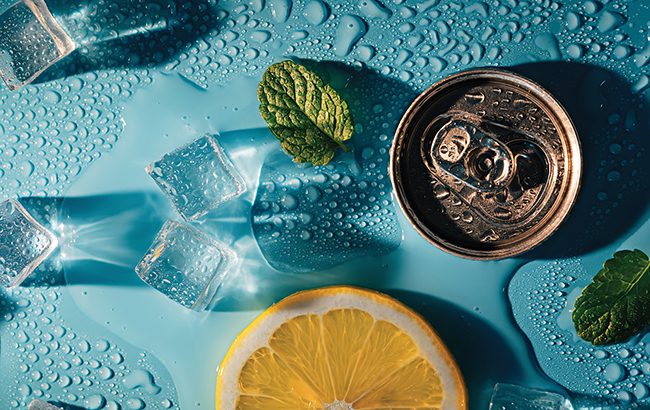Spirits-based RTDs drive category innovation
By Nicola CarruthersThe pace of innovation has slowed in the ready-to-drink category but spirits-based products are making gains at the expense of hard seltzers.

According to IWSR’s RTD Strategic Study, more than 3,400 new RTD products were launched in the world’s top 10 markets for the category in 2021, but by 2024 that figure had dropped to just over 1,800.
The study looks at the performance of the category in 10 key markets: Canada, the US, Mexico, Brazil, South Africa, the UK, Germany, China, Japan and Australia.
“Having reached a peak in 2021, new RTD product launches have been declining year on year, while volumes remain steadier,” says Susie Goldspink, senior insights manager – RTDs and no/low alcohol.
“The category is becoming less reliant on a never-ending stream of product launches, and RTD innovation is simply becoming more efficient.”
Last month, IWSR revealed spirits (excluding national spirits) and the RTD segment were the only categories to experience growth between 2019 and 2024.
RTDs posted a volume gain of 2% in 2024, with all of the top 20 markets expanding, except for Australia, China, India and the UK.
In 2021, one in every three new RTD launch was a hard seltzer, but in 2024 that figure dropped to one in nine.
In 2021, 34% of RTD launches in the top 10 global markets were malt-based, declining to 18% in 2024. Meanwhile, the share of spirit-based launches has risen from 55% to 67% over the same period.
In 2021, three out of every four new hard seltzer launch had a malt base, declining to 59% in 2024. On the other hand, spirit-based hard seltzers’ share of innovations rose from 22% to 40% last year.
While the wider malt-based RTD segment dropped, the flavoured alcohol beverage (FAB) segment – which accounted for 16% of launches in 2021 – increased its share to 28% in 2024.
‘Switch to spirit-based products’
“Traditionally malt-based categories, such as hard seltzers and hard teas, are undergoing a switch to spirit-based products, premiumising the offering as consumers become more aware of base and the quality associated with spirits,” Goldspink added.
“The establishment of an easy-to-drink, lower-ABV spirit-based category has now spawned another innovation race, although much smaller than that for malt-based hard seltzers.”
Spirits-based RTDs are forecast to grow by a compound annual growth rate (CAGR) of 6% in the US from 2023 to 2028, IWSR predicted in November last year.
IWSR also noted that premium-and-above innovations in the RTD category had peaked in 2023, with producers releasing lower-priced products in response to challenging market conditions and lower disposable incomes.
In 2021, 58% of new RTD launches were premium or above, rising to 61% in 2023, before falling back to 53% last year.
Meanwhile, the value price tier – which had dwindled to only 7% of launches in 2023 – hit a share figure of 15% in 2024.
“Despite this correction, the majority of RTD innovations continue to target the premium price band,” Goldspink noted. “This is due in part to a shift in product mix away from more affordable hard seltzers in some markets, and from FABs in others.
“It is further driven by premiumisation within categories and the rise of spirit-based products within traditionally malt-based categories, as well as inflationary pressures.”
Some markets, such as Germany and the UK, dominated the higher-priced segment. In 2024, 90% of new RTD launches in Germany was premium-plus, while in the UK the figure was 74%.
Higher-ABV RTDs are also increasing their share. In 2021, 51% of new launches in the top 10 markets sat in the 3%-5% ABV tier, but this share figure fell to 41% in 2024.
Over the same timescale, the proportion of launches with an ABV between 5%-7% has risen from 18% to 22%, while the share for RTDs with an ABV of 7% or more has increased from 25% to 29%.
IWSR noted the prevalence of higher-ABV launches in the UK and US. In the States, the proportion of new RTDs above 5% ABV rose from 48% to 55% between 2021 and 2024, while for the UK it has gone up from 53% to 72%.
In terms of flavours, lemon accounted for more than 8% of new RTD product launches in 2024, up slightly on 2021.
Lemon or lemonade flavour innovations were particularly strong in China, Germany, Japan, Brazil, Canada and Australia during 2024, IWSR found.
In the UK, passionfruit was the leading flavour for new RTD launches last year, while pineapple overtook lime (6%) as the most popular new product flavour in the US.
Related news
‘Modernised’ RTD laws could generate $10.9m in Quebec
